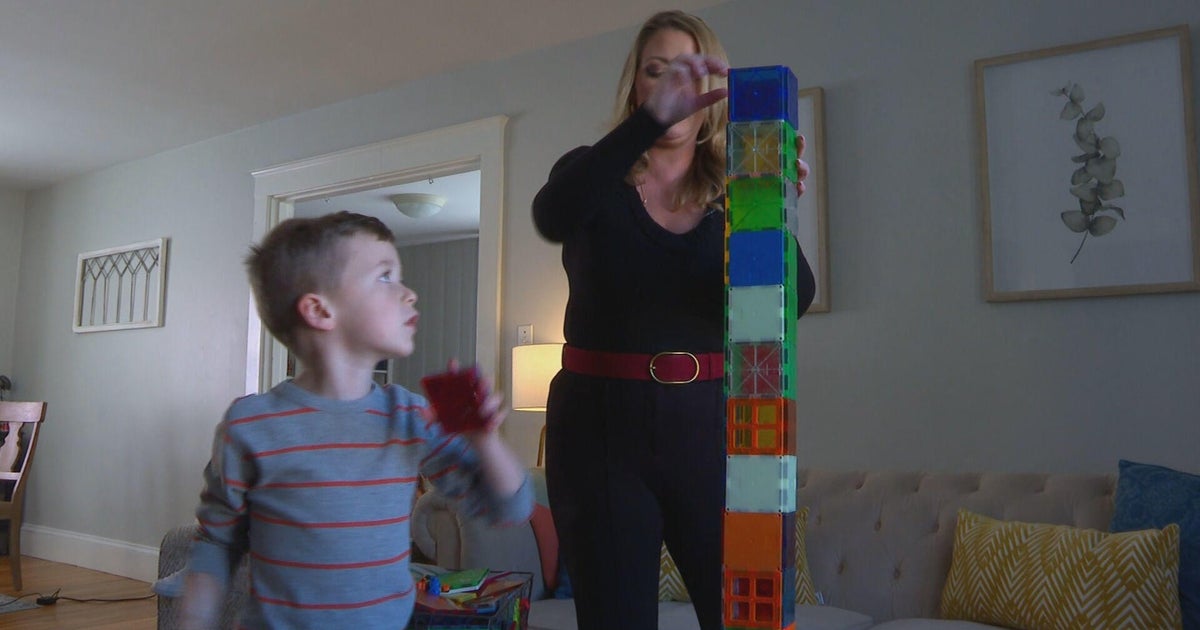This story is part of The Salt Lake Tribune’s ongoing commitment to identify solutions to Utah’s biggest challenges through the work of the Innovation Lab.
[Subscribe to our newsletter here]
Marissa Moran planned to cut her hours to spend more time with her two young kids.
“I was hoping to be able to be the person who goes into that role of having a half day Friday or leaving early to pick up so my son’s not always the last kid at day care like he is right now,” Moran said.
Then her family learned their child care costs would increase by 9% as federal grants stabilizing the industry expire in October.
Moran and her husband have started having discussions about whether it makes sense for both of them to work as child care costs increase, she said.
They likely won’t be the only parents facing hard choices if things don’t change.
Child care was “quite a mess” even before the coronavirus pandemic, said Jenna Williams, a policy analyst with the nonprofit Voices for Utah Children.
Then the federal government stepped in with stabilization grants when COVID-19 exacerbated issues within the industry. Utah received nearly $600 million to prop up the child care sector and expanded the number of slots available to families — funding services for an estimated 85,200 children.
But that funding is running out. The state’s Office of Child Care has indicated plans to reduce stabilization grants by 75% in October, and the money will end entirely by June 2024.
Voices for Utah Children and partners like the Utah State Board of Education and United Way of Salt Lake are raising the alarm about the looming crisis with potentially “catastrophic” impacts.
They’re also offering options like a provider tax credit, improvements to the child care subsidy program and other solutions to help.
Infant care in Utah costs $9,556 a year, on average, according to a market study from 2021.
That study puts child care for toddlers at $8,081 a year, on average.
Data from KIDS COUNT has a higher estimate at $9,003 for center-based child care and $7,684 for family care or home-based care. That’s up to 24% of a single mother’s salary and 9% of a married couple’s yearly income.
Those figures are higher than in-state tuition at several Utah colleges, including Southern Utah University, Utah Valley University and Weber State University. Infant care is more expensive than in-state tuition at the University of Utah.
And some families pay much more.
It will cost the Morans nearly $30,000 a year to have their two children in day care this fall.
The preschool their son attends and where their daughter will start increased prices by 9% in preparation for losing a stabilization grant, Moran said. That hike follows an 8% increase already imposed for inflation.
Moran understands the reason — the day care wants to up teachers’ pay — but said continued increases could make the cost unsustainable even in their dual-income household. Moran is a physical therapist, and her husband is a mechanical engineer for a pipeline company.
“If this continues at this pace, there’s just no reason for me to even work,” she said.
The rate increases are replacing stabilization grants that helped child care centers stay open, Williams said.
More than 80% of providers in Utah received grants, she said, and 40% told Voices for Utah Children they would have closed without the money.
Maria Soter, the founder and director at The Sammy Center, still worries she might close without enough funding.
She’s raising rates by hundreds of dollars monthly to make up for losing a stabilization grant and will still be “barely breaking even every month.”
Soter said she can’t afford to give her teachers a raise.
All of them have second jobs, she said. Even Soter has another job working for the crisis line at the University of Utah.
(Rick Egan | The Salt Lake Tribune) Michael and teacher Alyssa at the Sammy Center Preschool on Thursday, Aug. 3, 2023. Data shows child care costs in Utah are higher than in-state tuition at several state universities.
Child care workers have always been undervalued with depressed wages, Williams said.
Utah Care for Kids points out that animal caretakers, including doggy day cares, dog walkers and more, have higher median wages than child care workers.
According to state data updated in October, the median wage for child care workers is $23,522 a year — $11.31 an hour. The median wage for animal caretakers is $26,615, or $12.80 an hour.
Society needs to work to empower child care workers as educators, Williams said.
“These are not babysitters,” she said. “These are people who are raising the next generation of people in our society.”
Soter and teachers at The Sammy Center focus not just on teaching but also on helping children learn social skills and to thrive emotionally. They seek to give children “life-long skills on how to problem solve and how to self regulate.”
The center is licensed to take care of 16 children and has three to four adults on hand so there are opportunities for one-on-one support for children who need it, Soter said.
Some children at the center have been expelled from other programs and wouldn’t have anywhere else to go, she said. The Sammy Center is inclusive of neurotypical and neurodivergent students and doesn’t turn children away because of behavioral issues.
A couple of families have told her they’ll find ways to pay the increased rate because there’s nowhere else their child can go, Soter said.
But two other children are going elsewhere, she said, and she may lose two more before the fall.
Child care costs are leading an increasing number of parents to move their children to different centers or to quit, shift to remote work or make other changes to provide care at home instead.
Some of Moran’s co-workers already have gone down that path, she said — three have left within the last six months because of issues with child care.
According to KIDS COUNT, 13% of Utah children were in families where a parent had job changes due to child care problems. Changes could include quitting, not taking a new job, changing hours and more. That was on par with the national rate and higher than 28 other states, including neighboring Wyoming.
A survey report from the U.S. Chamber of Commerce found child care issues had impacted 34% of Utah women and 28% of Utah men.
That report also found more detailed impacts of child care costs and shortages:
-
6% of women and 1% of men were fired.
-
11% of women and 6% of men quit their job.
-
12% of women and 9% of men moved to part-time hours.
-
6% of women and 13% of men couldn’t accept a new job.
Parents also reported missing work or class, being late or distracted and getting calls about their children or other disruptions while at work.
Men were more likely to report skipping or being late, while women were more likely to report frequent disruptions and distractions.
Absences and turnover because of child care issues cost Utah employers an estimated $1.1 billion per year, according to another report produced by the Salt Lake Chamber of Commerce and its Utah Community Builders program.
Businesses need to be a “pretty robust” part of finding solutions, said Kabi Catalano, executive director of Utah Community Builders.
There are lots of options, she said, from providing on-site care to subsidizing care through flex spending accounts for employees to contracting with a third-party vendor for backup care.
Plans to return to the office post-pandemic have added more burdens to working families, Catalano said, and may challenge parents’ mindset about whether they can stay in the workforce. This in turn can worsen labor shortages.
Businesses should ask their employers what they need and work with officials on solutions, she said.
Lawmakers need to step up, too, Williams said.
“Utah has idealized staying at home. The problem is most parents can’t afford to do that,” she said. “A lot of policymakers here were raised by their moms at home, and that’s the most experience they have with child care.”
Moran questioned why the government doesn’t help most parents until a child turns 5.
“The biggest lie that we’ve ever been sold is that Utah puts family first,” she said.
The government needs to start helping foot the bill, Moran said.
Advocates have asked for funding to continue stabilization grants, Williams said, but a recent request was “a bit scoffed at.” The amount was so high because it hasn’t been done before, she said, and there are already plans to go back with a smaller ask.
Other potential solutions include a wage supplement and a tax credit for child care providers to help them stay in the industry, she said.
Utah also could expand its child care subsidy program. Currently, just 9.5% percent of eligible families receive a subsidy, Williams said.
(Rick Egan | The Salt Lake Tribune) Louie and Isla play with toys at the Sammy Center Preschool on Thursday, Aug. 3, 2023. Utah lawmakers could do much more to subsidize rising child care costs, said a mother of two preschoolers, adding “the biggest lie we’ve ever been sold is that Utah puts family first.”
A child tax credit passed earlier this year is a big help, she said, but analysis has shown it helps “very few people.”
In general, state lawmakers haven’t committed much money to child care in the past, Williams said.
“We just need to do something, because there’s not a lot of investment … yet,” she said.
Megan Banta is The Salt Lake Tribune’s data enterprise reporter, a philanthropically supported position. The Tribune retains control over all editorial decisions.
Editor’s note • This story is available to Salt Lake Tribune subscribers only. Thank you for supporting local journalism.



























/cdn.vox-cdn.com/uploads/chorus_asset/file/25789444/1258459915.jpg)

/cdn.vox-cdn.com/uploads/chorus_asset/file/25546252/STK169_Mark_Zuckerburg_CVIRGINIA_D.jpg)


/cdn.vox-cdn.com/uploads/chorus_asset/file/23951353/STK043_VRG_Illo_N_Barclay_3_Meta.jpg)